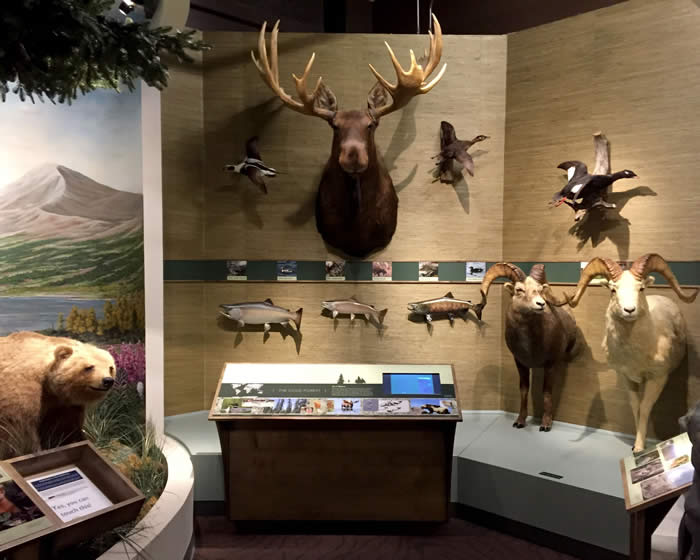 East Stroudsburg University's Schisler Museum
East Stroudsburg University's Schisler Museum
IF YOU GO
Where: The Schisler Museum of Wildlife and Natural History is inside East Stroudsburg University’s Hoeffner Sci-Tech Center, at the corner of Normal Street and Ransberry Avenue, East Stroudsburg.
Visitor's information: The Schisler Museum and the McMunn Planetarium are open to the public. Fees apply. Click here.
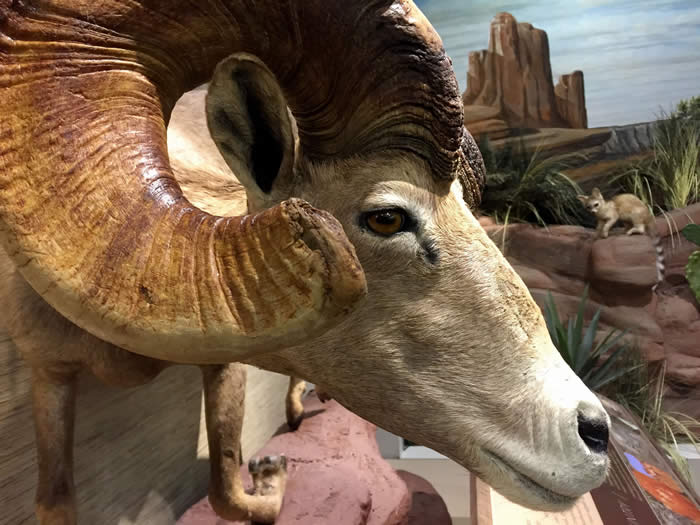
An indoor stroll through the great outdoors
By Carol Hillestad
Standing eyeball-to-eyeball with a muskox may not be an everyday occurrence in the Poconos. But muskox, polar bear, and a rather alarming hyena peered out at us on a recent cold and blowy Saturday afternoon.
It was a long-promised outing to the Schisler Museum at East Stroudsburg University with my husband, Jim. In the span of an hour, we visited the Frozen North, a Boreal Forest, Canyon Country, the Verdant East, and the African Bush.
Jim was blown away. Not by the extent of the exhibits — though an amazing number of the world’s creatures are represented in a very small space. What struck him was the realism of the dioramas and the intimacy of the settings. No thick glass separates you from the displays. To protect the exhibits, no touching is allowed. But you really can get eye to eye with that muskox!
There is lots to learn here, even without a guide. One signboard told me that 27 percent of the world’s forest cover is in the Boreal Forest — that’s the land south of the Arctic Tundra, including Alaska, Canada, and the northern United States. It’s the largest land habitat and the largest wilderness on earth. The soil is thin, but boggy where depressions occur.
This was an aha! moment for me. Suddenly, knowing that the Tannersville Cranberry Bog is the southernmost boreal bog in the eastern United States made that magical place seem even more magical.
The Verdant East displays and describes the eastern forests we call home. Critters you see outside your kitchen window and along every roadway are put in context.
Living with all this beauty, it’s easy to forget that the Pocono Mountains host some of the greatest diversity of life on earth. The big reason for that diversity? Our natural resources — pure water, abundant creeks, upland forests, bogs, wetlands, marshes, and enough undisturbed land to protect it all.
Even if you’ve lived here forever, there’s plenty to learn at the Schisler Museum about the amazing everyday creatures in our woods — from the special “fur” of the porcupine (aka quills), to why possums drool when threatened, to the silent feathers of a screech owl.
An entire room is devoted to the deer family, including that most majestic kind of deer, the moose, whose every subspecies is on display. Ducks and birds and about a zillion insects are here, too.
Of the larger creatures, the museum has more than 130 species from around the world, thanks to the generosity of Art and Fannie Schisler. Graduates of ESU, the Schislers donated the animals to the university and supported the creation of a museum to display them.
Admission includes a visit to the McMunn Planetarium to see one of its five films. The planetarium was closed during our visit, but we’ll be back to see “Passport to the Universe” with Tom Hanks.
For an indoor “hike” on a cold and blowy January day, head to the Schisler Museum!
Carol Hillestad is a hike leader and writer for Get Outdoors Poconos, a grant-funded series administered by Brodhead Watershed Association.
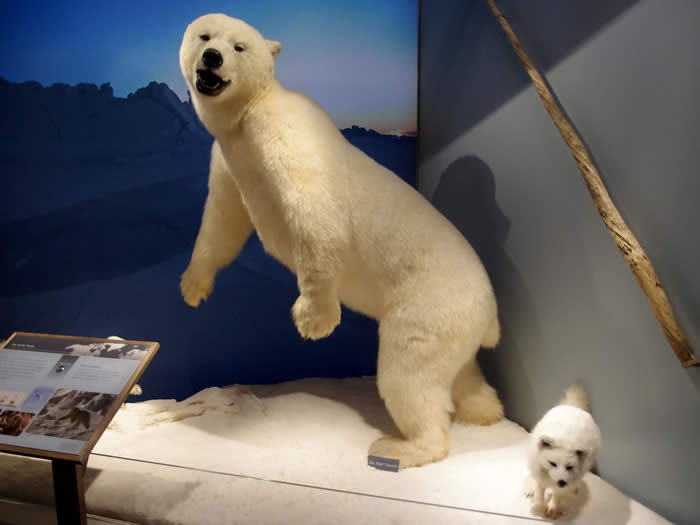 |
||
| This polar bear in the Frozen North exhibit is one of the first sights at the Schisler Museum. |
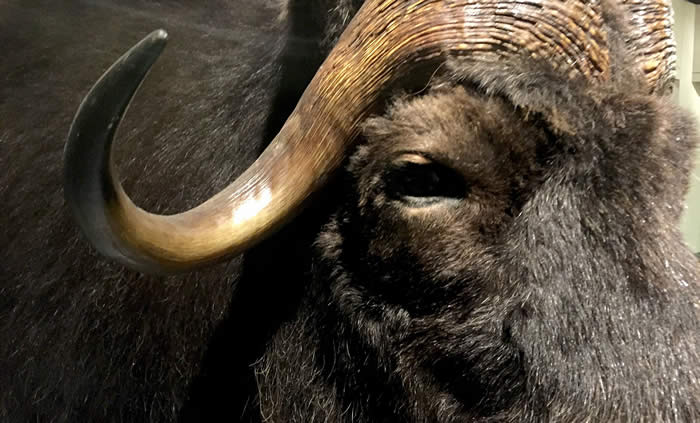 |
||
| The hairy overcoat of the musk ox protects it from the weather. Its warm, downy-soft undercoat is prized by handspinners for its softness and warmth. |
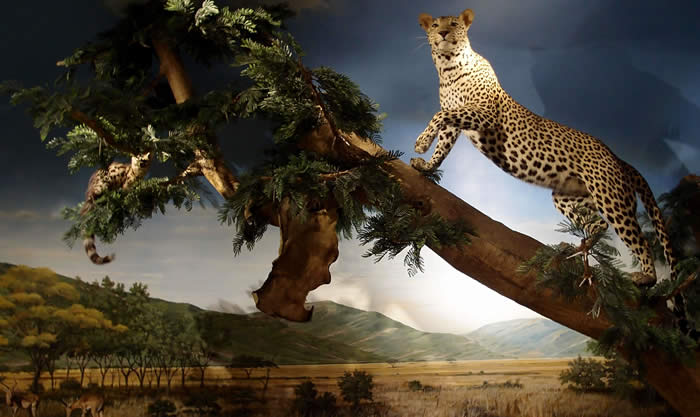 |
|
| A cheetah prowls in the African Bush. |
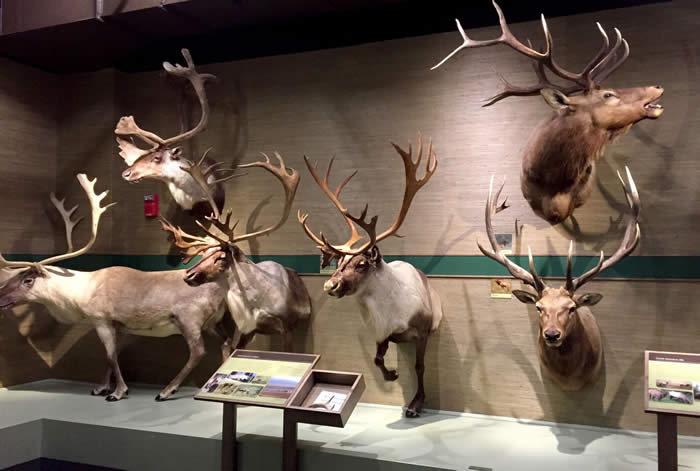 |
|
| The displays in the Deer Room go well beyond the common white-tail. |
Comments from other hikers:
Be the first to comment!
Share your experiences of this trail -- what you saw, how you liked it:
